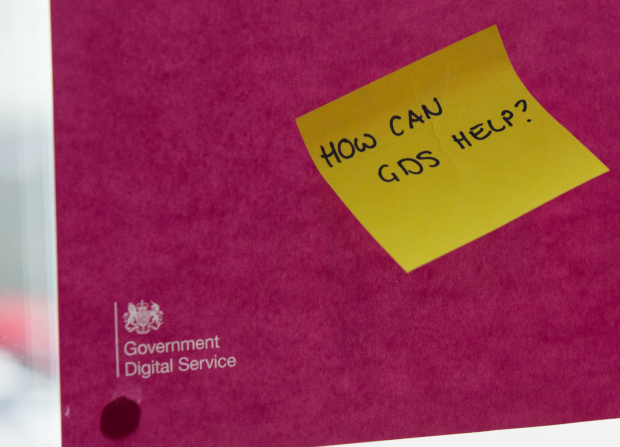
The whole of government has just been through a Spending Review (SR) process, which is where departments work with the Treasury to outline the work they want to do over the coming year (or sometimes multiple years) and to get the money to do this.
Spending Reviews are an opportunity for us to look to the future and to ensure that - among continuing technological and societal changes - digital government can continue to meet user needs.
At GDS, our role is to lead the Digital, Data and Technology (DDaT) function across government, working with cross-functional partners including the Government Security Group and the Government Commercial Function. At Spending Review time this means working with digital teams across departments to help them best make their case to the Treasury - and also to help Treasury teams understand where they need to invest money.
This is particularly important because we know there are foundational challenges that all departments face - issues like dealing with legacy technology, protecting against cybersecurity breaches and making the best use of the data they have.
These are common challenges where a cross-government approach can help to identify effective, efficient solutions. They are also areas where we can provide subject-matter expertise to help the Treasury identify priorities and to work out which projects to fund.
So, in the run-up to the Spending Review we worked with departments to assure and support their bids to the Treasury and to look for join-ups or areas of overlap. In doing this, we helped the Treasury prioritise over £600 million in funding over the next year to tackle vital legacy technology issues.
Here’s how we brought a cross-government approach to this year’s Spending Review.
Getting a cross-government view of digital
Working with a team comprising colleagues across Cabinet Office, GDS, the Government Security Group and the Government Commercial Service, we brought together a panel of experts from different areas to assess departmental Spending Review proposals. As well as DDaT experts this included specialists from the Commercial and Security functions and senior representatives from the Treasury and the Digital Economy Council. We wanted to ensure we could bring the right insight and fully support departments.
Following these sessions we worked with colleagues from across the Cabinet Office to analyse the findings and to present recommendations to Treasury teams, to help them work out where best to target funding. Doing this meant that - for the first time - we were able to provide a cross-government view of digital work, spending and priorities.
Enabling targeted funding
As a result of this assurance process, and work that had gone into developing a cross-governmental approach to issues such as legacy technology before that, the Treasury was able to prioritise areas of critical risk and opportunity and target spending towards them. Working with GDS, the Treasury has also updated its business case guidance for agile digital and IT projects, which aims to help departments secure resources for the Discovery and Alpha phases of projects.
Through the SR the Treasury has allocated over £600 million across government towards addressing critical legacy technology issues. This includes an additional £268 million for HMRC, £232 million for the Home Office, £40 million for the Ministry of Justice (MoJ) and £64 million for the Department for Education.
This investment will reduce the risk of failures, improve efficiency and ultimately lead to a better service for the public. Treasury officials say it would not have been possible to identify all this legacy spend without the insights produced by the assurance process - which would have meant continued risk of failures and legacy technology continuing to block plans for digital transformation.
Our plans for ongoing assurance
The DDaT assurance process has demonstrated the value of expert advice and support to identify and articulate challenges across departments and to help the Treasury prioritise funding. We’ve been able to build a picture of DDaT proposals, priorities and spending across government.
Departments have told us that they found the support from the process extremely valuable. Tom Read, currently Chief Digital and Information Officer at MoJ and soon to join GDS as Chief Executive, who attended an assurance session, says: "The sessions had just the right balance of holding departments to account and supporting in a collaborative way. Although we’ve worked hard to highlight the importance of investing in digital, technology and security, the concerted effort from the Cabinet Office has been invaluable."
To build on this, GDS is now developing detailed proposals for what an ongoing assurance process of departmental priorities might look like, working with colleagues from across the DDaT, Security and Commercial functions, as well as the Treasury. Spending reviews are known events that we plan for constantly, especially when many DDaT projects run for multiple years, from design through to decommissioning.
We will develop our assurance process so that it is easy for departments and Treasury to take advantage of, and so that as many departments as possible can be involved.
We hope that, by doing this, we can ensure that DDaT insights and assurance become part of the normal operating model for Cabinet Office and the Treasury, and can ensure that the right challenges continue to get the right funding.


2 comments
Comment by Simon Clydesdale posted on
Interesting - would be good to know what prioritisation criteria were adopted/followed. Were these HMT priorities (predominantly fiscal; ATR; efficiencies) or strategy-laden (or a combination of the two)? Or more?
Comment by The GDS Team posted on
Hi Simon,
For the assessment sessions, it was a combination of the two - both financial and strategic. This meant assessing departments’ strategic digital goals as well as ensuring that we could - across the whole Digital, Data and Technology Function - make a compelling case to Treasury to fund priority issues like legacy technology.
Thanks,
The GDS Team